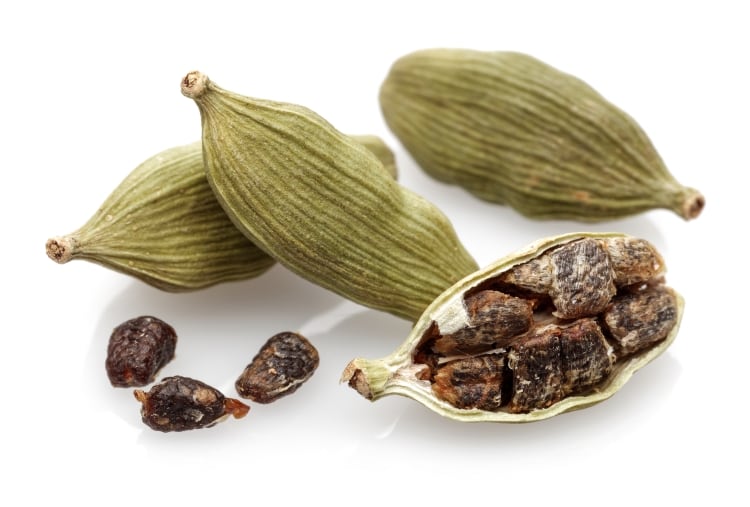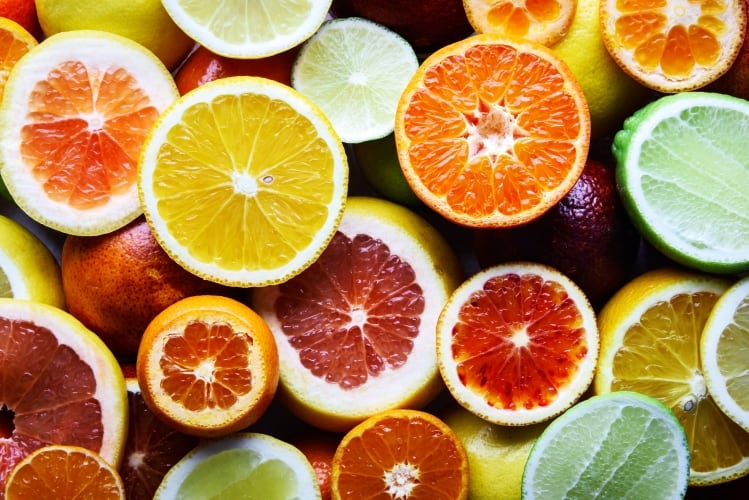But what trends will we see in 2021? We spoke with Marie Wright, president of creation, design and development and chief global flavorist at ADM, and Emina Goodman, senior director, colors, ADM.
What flavors and colors do you see currently trending?
Marie: We find people are currently drawn to both warm, comforting flavors like vanilla and cinnamon, and refreshing, uplifting flavors associated with well-being like citrus, superfruits and berries. As people focus more on holistic well-being, including physical, mental and emotional health, we anticipate these flavors will steadily trend into 2021.
With the colder months upon us in the northern hemisphere, cinnamon, ginger, cayenne and allspice are increasing in popularity, as these warm ingredients can have comforting and calming connotations. People are also seeking out familiar and indulgent flavors this time of year, such as chocolate, vanilla, peanut butter, birthday cake, caramel, coffee and tea.

Specifically, vanilla is in high demand, with sales soaring this year due to an increase in at-home baking, and because it’s a key flavor in comfort foods like ice cream. Consumers are looking to couple these nostalgic flavors with warm and earthy colors. Moreover, they are gravitating towards calming colors, such as botanical purples, to reinforce mental and emotional wellbeing.
Citrus flavors are also trending, as many consumers associate them with high levels of naturally occurring vitamin C, which can signal health benefits like immune function support. Mint is another flavor gaining popularity, as it is often used in better-for-you products. Along with these flavors that are linked to aspects of wellbeing, people are reaching for products with vibrant colors, like bright orange, yellow, greens and reds, that cue energy and happiness.
What driving consumer forces are behind these flavor and color trends?
Marie: The main driving force behind current flavor and color trends is the growing concern for health and wellness and the proactive approach consumers are taking to manage their holistic well-being.
The ongoing pandemic continues to make health and wellness a main priority for many people, as they are seeking healthier options that support both their physical and mental well-being. In fact, ADM Outside Voice research finds 35% of consumers report being concerned about mental health, and 84% see mental health as being equally important as physical well-being. This, coupled with 57% of global consumers being more concerned about their immune system because of COVID-19 (FMCG Gurus, June 2020), is driving people toward a mix of indulgent foods and beverages with comforting flavors as well as better-for-you options with health-signaling ingredients.
Emina: Additionally, consumers’ desire for ingredient transparency and a clean and clear label is pushing product developers to use easily identifiable ingredients and natural flavors and colors. Our research finds that 50% of consumers prefer products that contain natural ingredients they consider to be beneficial to their health, and 62% actively avoid artificial coloring in foods and beverages.
Formulators should consider using plant-based colors and flavors that align with this growing trend. For instance, our vast Colors from Nature portfolio includes natural, plant-based solutions for consumer-preferred offerings with visual, taste and clean-label appeal.
How are these flavor and color trends influencing the dairy space?
Marie: Many dairy offerings on the market are starting to include health-signaling flavors and colors. With flavor and color trends deeply rooted in health and wellness demands, we see an exciting opportunity to apply them in a variety of dairy foods and beverages.
We specifically find immense opportunity with yogurts and yogurt drinks. The “health halo” that already exists around yogurt and digestive benefits is inspiring product developers to incorporate more gut microbiome-supporting ingredients such as prebiotics, probiotics and postbiotics. Nutrient-dense yogurt drinks can benefit from trending health-signaling traits like botanical and citrus flavors and bright, vibrant colors to drive home the functionality of the product.
Additionally, permissible indulgence and comfort flavors are creating room for frozen desserts to grow into the better-for-you category. Frozen desserts can satisfy consumer cravings with comforting and nostalgic flavors while also providing nutritional benefits from functional ingredients like added fiber. For example, our Fibersol line allows formulators to add soluble fiber to applications like ice creams, helping to achieve a better-for-you label without sacrificing a delicious eating experience.
When formulating with plant-forward applications, what flavor and color challenges may arise? How do you solve them?
Marie: Plant-forward dairy alternatives are on the rise as more consumers identify as flexitarians, and we find there is room for improvement in developing authentic dairy-like flavors for plant-based applications. For example, when using soy or pea proteins for milk alternatives, the rich, creamy consistency and milky flavor people expect in traditional dairy products can be lacking.
Plus, soy and pea can have off notes that may come forward. To solve this, we use natural flavors that mask off notes and add vegan dairy-matching flavors, mouthfeel enhancers and texture stabilizers to build back dairy’s distinctive flavor and texture. Additionally, in plant-forward yogurt drink alternatives, we can mimic the fermented taste of yogurt by using vegan lactic acid or yogurt-style flavors.
Emina: Using plant proteins in dairy alternatives also presents a challenge in matching the appearance of traditional dairy applications. Plant proteins do not all have a neutral color, and it can be difficult to achieve the desired light color and milky appearance. We solve this by working with high-quality proteins that are light in color when processed properly, such as soy, oat and pea, and by leveraging our natural color portfolio to add color agents that achieve a whiter, lighter color.

What emerging flavor and color ingredients do you foresee being used in dairy applications throughout the next year?
Emina: Driven by the search for foods and beverages that meet holistic health and wellness goals, we anticipate consumer interest in superfoods and superfruits to grow. Superfruits provide unique color and flavor profiles in products, and consumers are already aware of the potential health and wellness benefits superfoods may offer.
We see elderberry growing in popularity, which is a superfruit with a vibrant red color, a refreshing flavor and it contains natural antioxidants. Introducing elderberry into yogurt applications helps achieve rich shades of red, blue and purple. Additionally, turmeric is becoming another widespread option for its bright yellow color, flavor and known use in traditional remedies.
Marie: In 2021, we anticipate more consumers to be adventurous with their foods. While comfort flavors like vanilla and birthday cake will still be trending, we foresee people coming out of their comfort zones to be more exploratory with their foods and beverages through ethnic and exotic flavors and spices.
To ease into exploring new flavors, we expect to see product developers combine comfort and adventure by creating offerings like frozen desserts that pair heat with chocolate or citrus. Ginger will also likely be on the rise, as it provides interesting flavor notes and has a perception of supporting digestion. Finally, we also anticipate seeing more products with cardamom as it adds complexity and is delicious with flavors like chocolate or pear.




